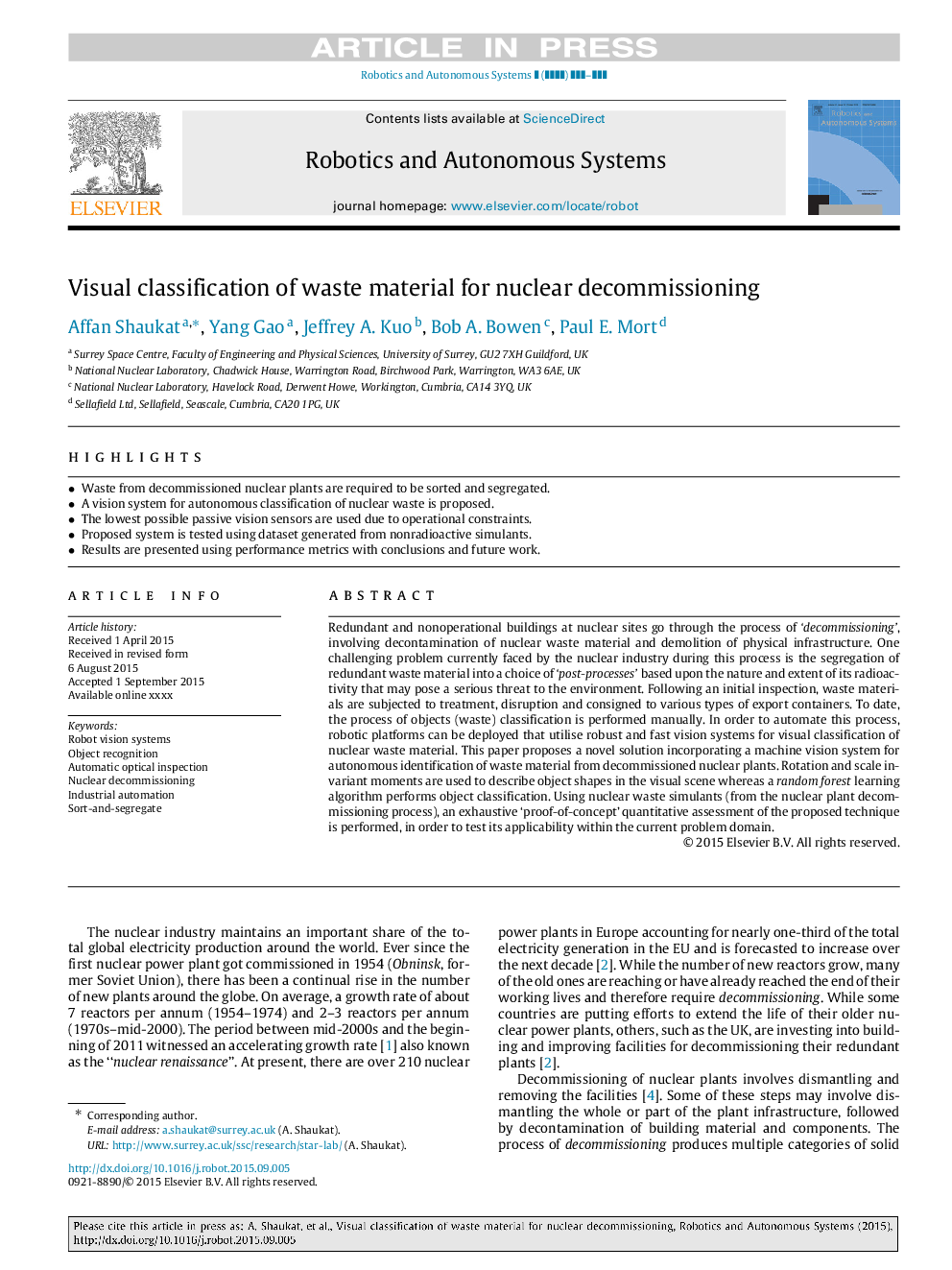| Article ID | Journal | Published Year | Pages | File Type |
|---|---|---|---|---|
| 10326720 | Robotics and Autonomous Systems | 2016 | 14 Pages |
Abstract
Redundant and nonoperational buildings at nuclear sites go through the process of 'decommissioning', involving decontamination of nuclear waste material and demolition of physical infrastructure. One challenging problem currently faced by the nuclear industry during this process is the segregation of redundant waste material into a choice of 'post-processes' based upon the nature and extent of its radioactivity that may pose a serious threat to the environment. Following an initial inspection, waste materials are subjected to treatment, disruption and consigned to various types of export containers. To date, the process of objects (waste) classification is performed manually. In order to automate this process, robotic platforms can be deployed that utilise robust and fast vision systems for visual classification of nuclear waste material. This paper proposes a novel solution incorporating a machine vision system for autonomous identification of waste material from decommissioned nuclear plants. Rotation and scale invariant moments are used to describe object shapes in the visual scene whereas a random forest learning algorithm performs object classification. Using nuclear waste simulants (from the nuclear plant decommissioning process), an exhaustive 'proof-of-concept' quantitative assessment of the proposed technique is performed, in order to test its applicability within the current problem domain.
Keywords
Related Topics
Physical Sciences and Engineering
Computer Science
Artificial Intelligence
Authors
Affan Shaukat, Yang Gao, Jeffrey A. Kuo, Bob A. Bowen, Paul E. Mort,
